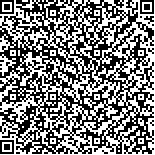沈菲,刘敏.重复经颅磁刺激治疗非器质性失眠症大学生的疗效观察[J].中华物理医学与康复杂志,2021,43(9):797-801
扫码阅读全文

|
| 重复经颅磁刺激治疗非器质性失眠症大学生的疗效观察 |
|
| |
| DOI:10.3760/cma.j.issn.0254-1424.2021.09.006 |
| 中文关键词: 非器质性失眠症 重复经颅磁刺激 匹兹堡睡眠质量指数 大学生 |
| 英文关键词: Insomnia Transcranial magnetic stimulation Pittsburgh sleep quality index |
| 基金项目:武汉市卫健委项目(WX16z11) |
|
| 摘要点击次数: 5978 |
| 全文下载次数: 6129 |
| 中文摘要: |
| 目的 观察重复经颅磁刺激(rTMS)治疗非器质性失眠症大学生患者的临床疗效。 方法 采用随机数字表法将72例非器质性失眠症大学生分为观察组及对照组,每组36例。观察组给予rTMS治疗,磁刺激部位为右侧背外侧前额叶皮质区,磁刺激频率1 Hz,磁刺激强度为120%静息运动阈值水平,对照组给予假磁刺激。于治疗前、治疗4周后分别采用匹兹堡睡眠质量指数量表(PSQI)、汉密尔顿抑郁(17项)量表(HAMD17)、汉密尔顿焦虑量表(HAMA)及蒙特利尔认知评估量表(MoCA)对2组患者进行疗效评定。 结果 治疗4周后发现观察组PSQI各项指标评分(除催眠药物指标外)均较入选时及同期对照组明显改善(P<0.05),对照组治疗前、后其PSQI各项指标评分及总分均无显著变化(P>0.05)。治疗后2组患者HAMD评分及HAMA评分均较治疗前明显降低(P<0.05),且治疗后观察组HAMD评分及HAMA评分[分别为(5.6±2.0)分和(6.2±2.3)分)]亦显著优于对照组水平(P<0.05)。治疗后观察组患者MoCA视空间与执行功能评分、注意评分、延迟记忆评分及总分[分别为(4.43±0.69)分、(5.31±0.67)分、(4.19±0.74)分和(26.40±2.54)分]均较治疗前、对照组明显改善(P<0.05),对照组MoCA各项指标评分及总分均较治疗前无明显变化(P>0.05)。 结论 rTMS治疗可显著改善非器质性失眠症大学生患者睡眠质量、情绪障碍及认知功能,该疗法值得临床推广、应用。 |
| 英文摘要: |
| Objective To observe the clinical effect of repeated transcranial magnetic stimulation (rTMS) on non-organic insomnia using college students. Methods A total of 72 college students with non-organic insomnia were recruited and randomly divided into an observation group and a control group, each of 36, according to a random number table. The observation group was given rTMS treatment on the left dorsolateral prefrontal cortex at 1Hz and an intensity 130% of the resting motor threshold for 20min once daily, 5 days a week for 4 weeks. The control group was given sham magnetic stimulation. Depression, anxiety, sleep status and cognitive functioning were quantified before and after the treatment. Results After 4 weeks of treatment, significant improvement was observed in the treatment group (though not in the control group) in total Pittsburgh sleep quality index scores, and in all of its dimensions except hypnotic medicine. The average Hamilton depression and anxiety scale scores of both groups had improved significantly after the intervention, but the improvement was significantly greater in the treated group. Significant improvement was also observed in the average visual space and executive function score, attention score, delayed memory score and total score of the observation group using the Montreal cognitive assessment compared with before the treatment and compared with the control group. Conclusions Repeated transcranial magnetic stimulation can improve the sleep quality, emotional state and cognitive functioning of college students with non-organic insomnia. |
|
查看全文
查看/发表评论 下载PDF阅读器 |
| 关闭 |
|
|
|